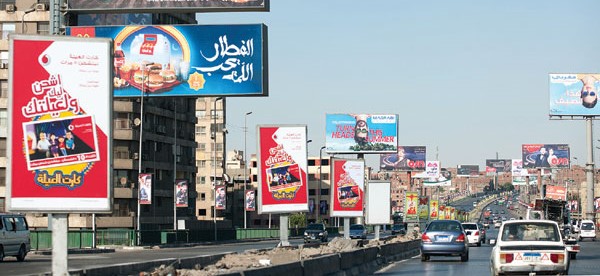A popular media image of Egypt features an extreme aerial view of the country at night. It shows how millions of electric lights in cities and towns along the Nile illuminate the outline of the massive river, from the south, all the way to the broad Delta in the north. This iconic – if overused – picture shows how our traces of civilization resemble a gleaming lotus. The thought that metropolitan expansions in modern-day Egypt collectively mimic an important pharaonic symbol was mainstreamed after NASA first shared it a few years back. While inspiring a grand notion, the same image also highlighted a huge red flag; we are consuming energy at such an alarming rate that it can be clearly seen from space.

The first time the photo went viral locally, Egypt was in the midst of its energy crisis. While the country is still easing out of its repercussions, the electricity sector has long stepped out of its shadows.
Any avid follower of current affairs can attest that the electricity industry is actively reforming. Yet the question remains as to how the upgrades will translate to the average household – especially with rising electricity prices impacting the overall cost of living.
To get a better understanding of the current expansion plans, their potential, challenges, and the impact they will have on both the average citizen and the overall business environment, Business Monthly sat down for an in-depth discussion with the Minister of Electricity and Renewable Energy, Eng. Mohamed Shaker.
Forty-two Percent Renewables
The interview began by discussing one of the more striking announcements made by the ministry, its plan to generate 42 percent of Egypt’s electricity from renewable energy by 2035 – as opposed to the previously announced 20 percent target by 2022. Shaker began by stressing his strong belief that the cost of generating renewable energy will further fall in the near future, thus allowing the country to expand the share of electricity generated from renewable energy.
“The original plan is not set in stone. I believe that we can reach 42 percent, especially given the remarkable decrease in the cost of photovoltaics and how we evolved in the past two years,” Shaker explains referring to the cabinet-approved plan aiming to shift the country’s energy mix away from natural gas and towards renewable sources. Currently, 91 percent of the energy mix is contributed by natural gas, according to an earlier speech by Shaker at a February AmCham event, with plans to decrease this percentage to 37 percent.
Further illustrating the fast pace the country is expected to follow, Shaker talks about the decline witnessed in the feed-in tariff (FiT) scheme, which was first proposed in 2014. “The first introduced tariff was $0.14 per kilowatt per hour [kWh], which shortly after decreased to $0.084/kWh. Yet it is effectively $0.071/kWh, due to the change in currency value, and we are about to decrease the value even further to be $0.038/kWh,” he explains noting the ministry’s plan to “follow global footsteps” and shift entirely towards the auction system, the procedures of which will be set in cooperation with the World Bank, “to ensure that the system established is efficient and effective.”
In response to a question on the expected contribution of Benban to Egypt’s energy mix target Shaker answers “Absolutely, it will be a major contributor. Our target is to generate 9,000 megawatts per year from renewable energy and Benban is expected to reach a capacity of 1,500 megawatts per year.”
Currently, renewable energy generates a combined total of 3,655 megawatts per year, according to Shaker, of which hydroelectricity generates around 2,800 megawatts per year; wind farms along the Red Sea coast add an average of 750 megawatts, and the consortium recently awarded a contract is expected to further add 250 megawatts of wind energy. Adding solar energy figures and Benban’s potential production of 1,500 megawatts to the mix and Egypt is expected to generate a total amount of 6,500 megawatts from renewables. “It is all about the math. Reaching our target of 9,000 megawatts is achievable in a few years,” he stresses.
Despite the ambitious plans, Shaker warns that Egypt can’t rely solely on renewable energy moving forward. “Solar energy can easily be obstructed the entire day due to heavy clouds; what do you do when that happens? That is why we need spare capacity in the electricity network that would allow us to make up for any shortages in a split second – and to be able to do this we are building the right balance with the new system that is currently under development and study,” he says.

Luring Investment to Renewables
Addressing the shift away from FiT, Shaker talks about how the scheme “didn’t work well with wind energy dynamics,” specifically in terms of payments. Fees are generally set in terms of US dollars, yet paid in Egyptian pounds. At the time, the procedure was to pay an initial 40 percent of the due value at the currency exchange rate of the “day of opening envelopes,” – a government term that refers to the official start of processing submissions for a given tender – while the rest of the amount is paid in local currency as well, but according to the exchange rate of the day production is due. “It wasn’t bankable enough to be attractive to investors,” he says.
Addressing this issue, Shaker explains that the ministry is currently working on shifting its operations away from a FiT scheme and toward an auction-based scheme. This is in line with a world-wide trend, including Germany, who even invented the initial FiT concept.
Shaker goes on to discuss the process that will allow the ministry to contract the best set of offers. “We aren’t reinventing the wheel,” he stresses. “What we mean by ‘auction’ is that you allow the bidding of several parties, stating your total required capacity.”
Further explaining the concept, Shaker illustrates a hypothetical example of a total requirement of 1,000 megawatts, where the bids received would vary. One company would bid to produce 200 megawatts at a certain unit price, while another would bid for the same amount at a lesser price, and a third would bid to produce 300 megawatts at an even lesser price per unit. The ministry would then choose from the pool of bids the best offers that, when combined, comprise the needed 1,000 megawatts. “The procedures are a bit more complicated than that and we are yet to fine-tune them for implementation here,” he adds.
The World Bank is currently collaborating with the Egyptian government on aiding the adoption process of the auction system, and this is based on the bank’s expertise in aiding other countries’ work with the auction system. Shaker hopes this partnership will, “have a positive impact in developing an efficient mechanism that suits the local market and maintain globally competitive standards.”
Waste-to-Energy Scheme
Before concluding the discussion on renewable energy, Business Monthly asks Shaker about the newly introduced waste-to-energy (WtE) scheme. “A large number of investors want to build WtE plants to get rid of the trash. This approach is about to become a reality in the market, very soon and with full power,” he affirms.
According to Shaker, the entire process and tariff calculations have been set, including how much the Ministry of Finance will contribute toward the costs. Nevertheless, the contribution of the WtE scheme “towards our renewable energy target is not much,” he says. “Nevertheless, it is a double benefit: We generate electricity and we get rid of the garbage in a useful way.”
Subsidies and the Poor Side of Town
Perhaps two of the core topics talked about in today’s economic climate are subsidies and the price of electricity. Shaker had recently announced that subsidies are expected to progressively decrease over the coming three years, thus further increasing the price of electricity.
Addressing the concerns of low-income households, Shaker explained that, “by removing subsidies, we don’t mean to negatively impact the poor. There will still be cross-subsidies, where households that consume below specific consumption levels will still receive government-produced electricity, which is essentially subsidized.”
Currently, the average cost of producing electricity is estimated at EGP1.04/kWh, while the average selling price is around EGP 0.85/kWh, he explains adding that the highest charged category pays EGP 1.35/kWh, while the lowest pays only EGP 0.11/kWh. “True, one of them deems the operation profitable but we have to remember that only around 400,000 households pay the highest tariff, while the majority of households are heavily subsidized,” he stresses.
BOO Plants and Liberalizing the Market
Explaining the need to remove subsidies, the interview shifted towards both the potential for build-own-operate (BOO) electricity plants and the idea of liberalizing the market.
“Liberalizing the market is by no means a simple process. We are working on one day allowing the end-consumer to choose between different electricity producers, while still supporting the poor through government production,” he explains. “But before we do that we need to remove the distortion in electricity tariffs.”
According to Shaker, all BOO plants are currently only interested in selling their production to the government. This is mainly due to the heavily subsidized electricity tariffs that prevent private players from entering the market. “We sell electricity below its cost of production, something a private player can’t compete with. We need private players to become profitable, so in the future they can remove part of the burden of building plants off the shoulder of the government,” he explains.
Shaker believes that as soon as subsidies are removed, private companies will view this side of the industry as a profitable venture, thus allowing the industry to reach “a more efficient mechanism.”
Part of expanding the role of private players is to ensure not only the “continuity of supply, but the quality of supply as well.”
Shaker specifies Upper Egypt as one of the major areas to see a benefit from amending the distortion in the pricing scheme. “We are trying to develop plants in Upper Egypt in partnership with the private sector, in order to elevate the level of service there. Currently, the region is mainly fed either from plants in Assuit or from the High Dam. The distance between the two is 600 kilometers,” he adds.
In terms of completely removing subsidies, he explains that while the original plan was to reach the needed tariffs by the next fiscal year, the plan was extended by three additional years, and now subsidies will be removed by 2021/2022. “Keeping in mind that the end-user is subsidized on two levels: First through subsidized natural gas, as we receive it at a cheaper price than international levels, and then the price we charge for electricity, which is less than our cost of production,” he adds.
Challenges in Progress
“Our real challenge is not generating electricity; it is distribution,” Shaker exclaims when asked about the challenges the ministry currently faces. He goes on to explain how a major problem in the integration of large projects is with the limited capacity of the existing network. “We have been working continuously on upgrading the national electricity grid for four years now. This is also the first time we develop a long-term expansion plan for the national electricity grid for the year 2025. We used to always build the plant and then tie it to the network,” he says.
“Our planned expansions themselves are also a challenge,” he added, as they require significant support from the Ministry of Finance. A fact that highlights the second roadblock Shaker talks about, the availability of funds that allows the execution of current plans.
Another major obstacle addressed during the interview is extending the electricity grid. The process of passing lines through privately owned land is quite a hassle, according to Shaker. Owners of the land can refuse access to their property or demand “excessive amounts of money to grant right of way.”
The fourth challenge he mentions is stealing electricity, through extending illegal connections to main grid-lines. “This hemorrhages a lot of money from our side.”
Finally, he notes collecting due bills. “While we do collect 95 percent of dues from the residential sector, in other sectors we are only able to collect around 30 percent of our dues. We also have commitments to pay from our side, such as those owed to the Ministry of Petroleum. How am I going to pay them if I am unable to collect dues?” he says.
With active reform efforts, it may seem that the ministry is not prioritizing the welfare of poorer families, a fact that Shaker often raised during the interview. He stressed the need to lift any distortion in the current mechanism to be able to work towards improving the service extended throughout rural areas, thus allowing the potential for economic growth in even the most unconnected towns. “In the phase we are in, limited-income households are the core of our focus,” Shaker concluded.







